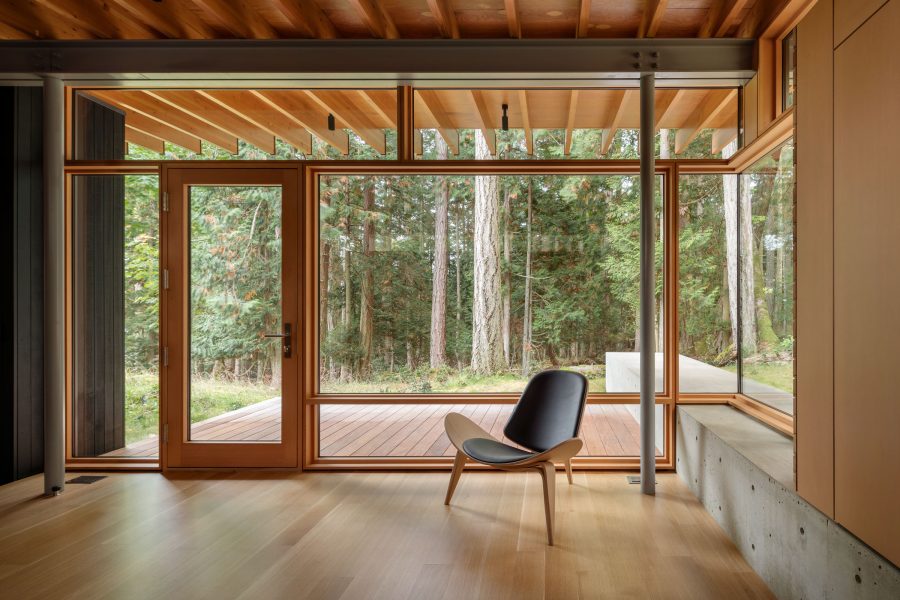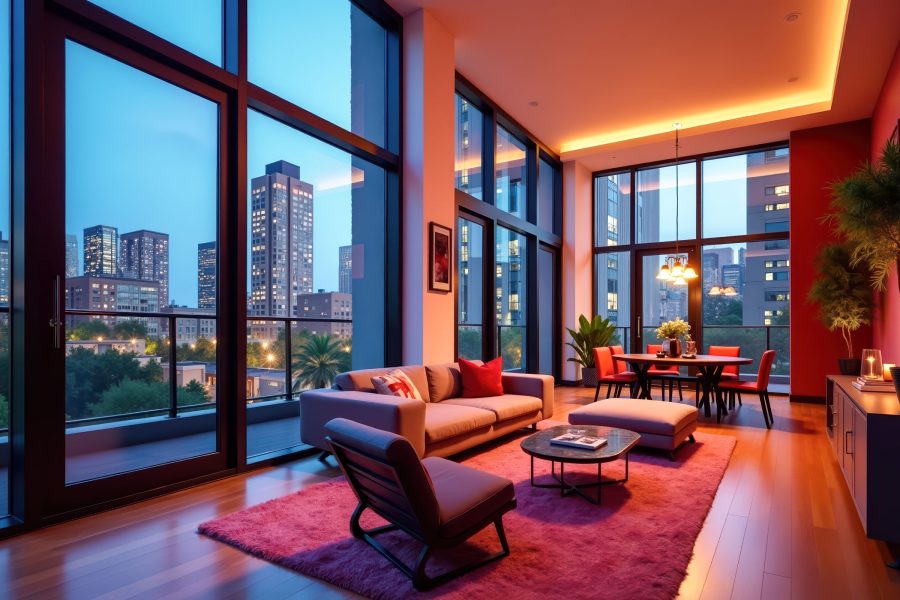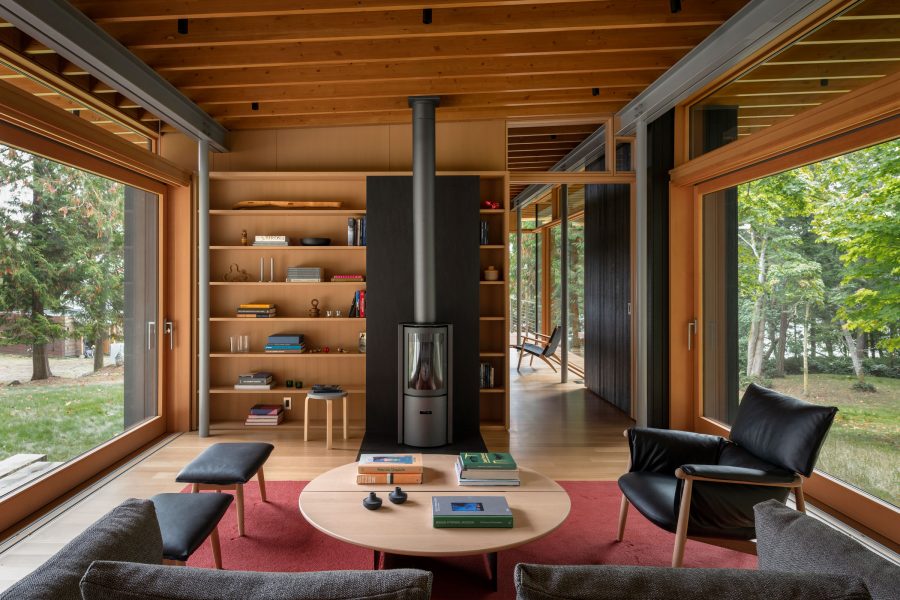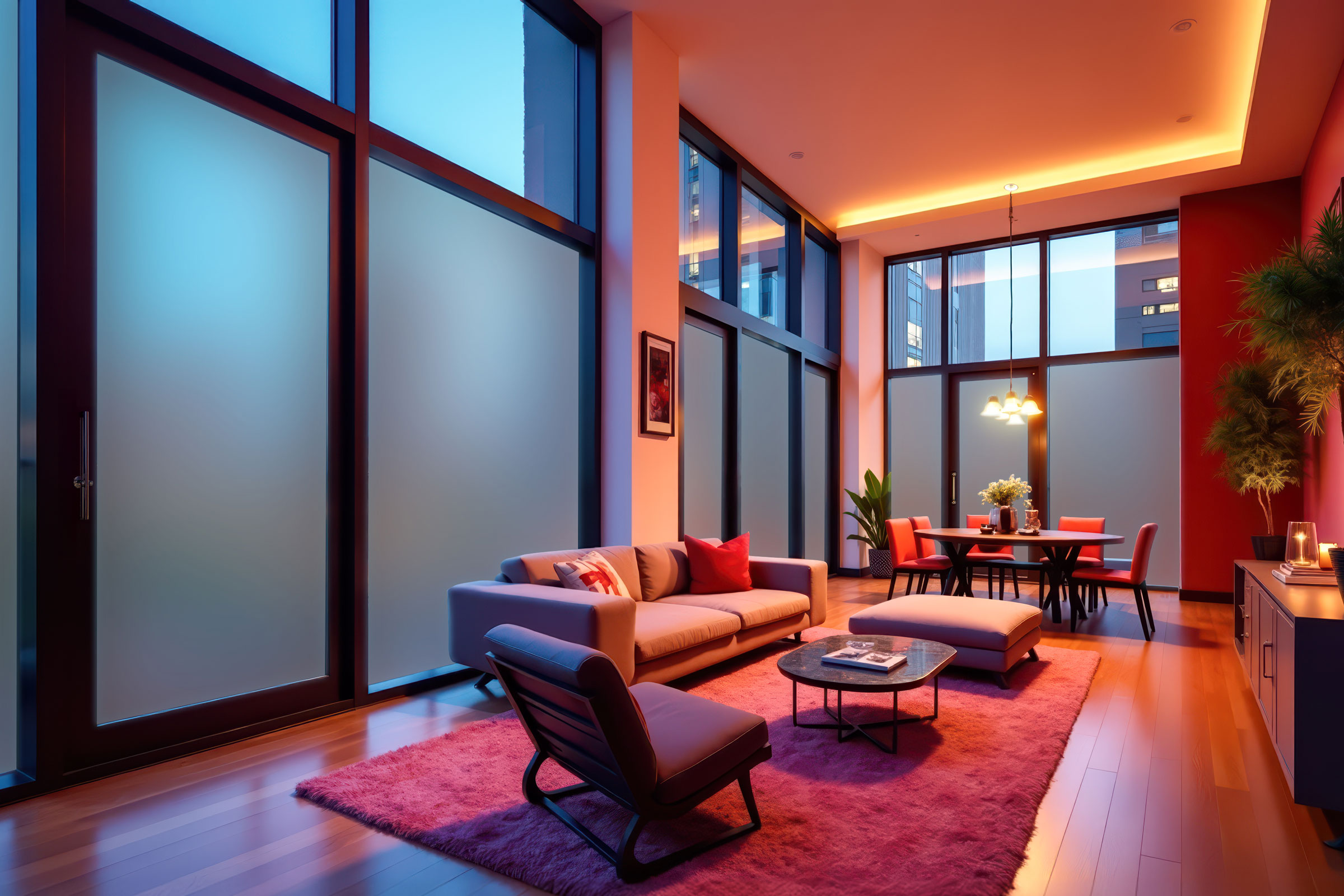Story at a glance:
- Glass production is no longer just about thermal performance—instead industry leaders are considering homeowner comfort and ease of use, too.
- Design trends like unobstructed views and aesthetic minimalism have inspired designers to seek glass products that offer all-in-one efficiency and flexibility.
- Smart glass technology solutions like switchable privacy glass are in demand.
Building aesthetics often follow lifestyle trends—and as more people seek the comfort and simplicity of nature, homeowners also look for ways to bring the benefits of the natural world indoors. A desire for daylight and unobstructed views leads to one obvious solution: more glass.
“In our single-family residential projects, we work extensively with window companies to find creative solutions to complex problems,” says Ray Calabro, a principal in the Seattle studio of Bohlin Cywinski Jackson (BCJ).
“We use glass in innovative and often unexpected ways—creating more meaningful connections between people and environments, enhancing building efficiency and performance, and contributing to the overall architectural expression of a project,” Calabro says.
It’s that demand for unexpected solutions that has driven Cardinal Glass Industries for more than 60 years. The largest producer of insulated glass (IG) units in North America, Cardinal delivers glass products with endless possibilities.
“We are always looking to lead the industry in performance and durability,” says Pete Whaley, project manager of product integration and stakeholder experience at Cardinal Glass. “It’s one thing to have the ideas; it’s another to execute and bring those dreams into the real world.”
Solutions that Perform
Historically new glass products have been driven by thermal performance requirements. As building codes have slowly progressed, glass production has, too. Most modern homes have some version of insulated glass in their exterior windows and doors. But where many glass companies miss the mark on longevity, Cardinal has led in IG durability, performance, and technology with a remarkably low 0.1% claim rate on its 20-year warranty, Whaley says.
Cardinal’s various LoĒ (low emissivity) coating options improve thermal efficiency, lower solar heat gain, and meet stringent performance standards. “Though Low-E coatings are not new, our technology has progressed,” says Ben Zurn, vice president of IG technology at Cardinal. “EPA’s Energy Star 7 came out last year, pushing performance levels higher. As smart home technology has become real, that has transferred into the glass and window market as well, so it’s not just thermal performance that matters, but also more user value.”
BCJ integrates solutions like Low-E glass and triple-glazed windows in many of its residential designs. “These solutions allow for energy efficiency and indoor thermal comfort without sacrificing the desired connection to the outdoors,” Calabro says.
Bigger is Better

The Henry Island residence in the San Juan Islands was designed by Bohlin Cywinski Jackson with uninterrupted views. Photo by Aaron Leitz
Top architects point to modern home design leaning contemporary, with clean, minimalistic lines—a trend that lends itself to bigger and better glass solutions. “Our residential clients are interested in feeling connected to a particular place and/or view,” Calabro says. “We are interested in pushing the limits of size for both fixed and operable units to help our clients feel immersed within their surroundings.”
Designers are also looking for alternatives to anything that obstructs the view or infringes on design goals. “They want that view,” Whaley says. “And to draw that exterior light in and expand the feel of the home,” Zurn adds.
That feeling of being enveloped is exactly what BCJ’s clients were looking for at Henry Island Guesthouse in the San Juan Islands. “We wanted the guesthouse to immerse visitors in the extraordinary island landscape while providing a comfortable and efficient environment for year-round stays,” Calabro says.
The guesthouse overlooks a meadow on one side with expansive forest views and glimpses of the bay on the other. The project has a high-performance building envelope, including thermally broken wood windows and doors with insulated glass units.
“The central common space opens completely to the landscape,” Calabro says. “By incorporating two layers of enclosure—glazed lift and slide doors and insect screens—guests have the option to control how much of the outdoors they wish to experience. And with deep roof overhangs and operable windows in all spaces, daylighting and natural ventilation further enhance this connection to place.”
Smart Home

CLiC switchable privacy glass is seen here as clear as opposed to the previous photo, in privacy mode. Photo courtesy of Cardinal Glass
That increased desire for natural light combined with a continuing need for thermal protection and privacy led to Cardinal’s development of CLiC switchable privacy glass. “One of the more advanced subsystems in the smart home realm is lighting control. With products like CLiC you’re controlling not only the light you’re creating inside your house but also the light coming in from outside,” Whaley says.
Zurn says CLiC gives designers that clean, minimalist aesthetic while maintaining privacy. “You don’t have to blow up your building design in order to get that desired clean look.”
Traditional privacy glass consists of layers of glass, film, liquid crystal, and polymer. “It has multiple pieces that create a hazy milkiness that the industry just couldn’t engineer out, which is why it was never quite clear enough for residential products,” Whaley says.
For years Cardinal researched the advantages of existing products and evaluated many different material sets before ultimately finding a chemistry that allows them to make CLiC switchable privacy glass that is clear at all viewing angles. “We developed our own formulation of a liquid crystal that gets applied directly to the glass with no film in between—just a piece of glass, the liquid crystal, and then another piece of glass,” Whaley says. “It’s much clearer than any other switchable glass on the market.”
When an electrical signal is applied to a CLiC window, the crystals align to a completely straight grid, creating complete transparency. When there’s no power applied, the liquid crystals are randomized and scattered, providing privacy. “We didn’t want our customers to worry about the complexity of wires and electrical connections, so we built our own electronics and made them universal,” Whaley says. “CLiC is not complicated. Most experts in the field can install CLiC with their eyes closed.”
With CLiC IG units, designers get multiple benefits that standard IG units don’t offer, including privacy, acoustical control, storm protection, thermal performance, light filtering, forced entry protection, and comfort. Historically those were individual things a consumer or designer might want, but CLiC offers them all in one, Zurn says.
He says CLiC is the modern version of antiquated venetian blinds. “It’s the iPhone 27 instead of the Fred Flintstone flip phone.”
Flexible Futures

Henry Island Residence is a year-round gathering place consisting of a main residence, guesthouse, workshop, and games pavilion, designed by Bohlin Cywinski Jackson. Photo by Aaron Leitz
The building industry has seen an increased demand for glass across markets—from luxury residential projects to offices, retail, and health care.
BCJ clients are often surprised by the amount of flexibility and customizable options they have in residential. “Flexibility in operable units, in particular, helps give our clients a great deal of control over their environment in all areas of the home while helping circulate natural air throughout the day and strengthening biophilic connections to the outdoors,” Calabro says.

